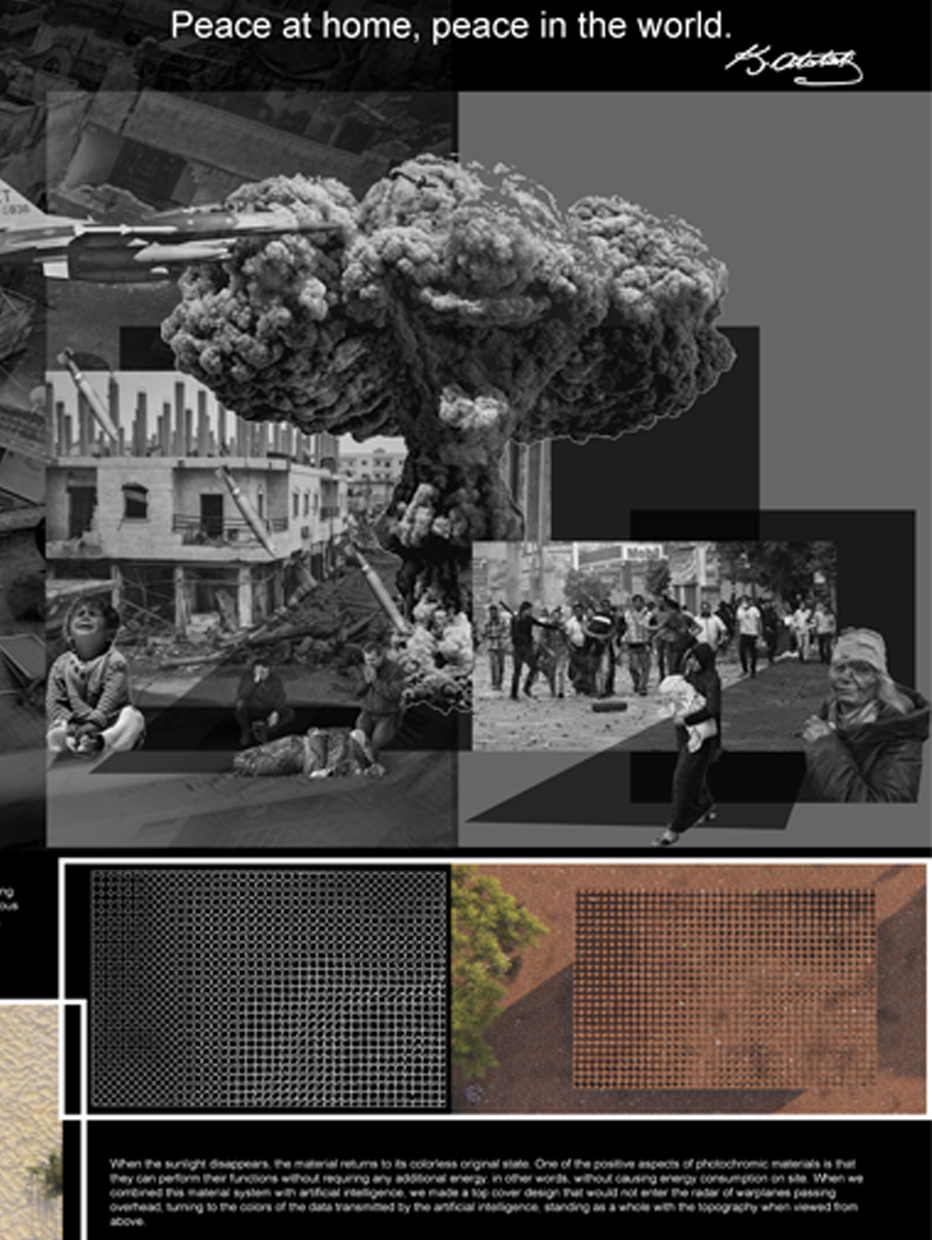Last Light Of War

Category
Daylight investigations - Region 2: Central and Eastern Europe and the Middle East.
Students
Zehra Nur AYDIN
Berra GÖRMÜŞ
Edanur HACIHASANOĞLU
School
Aksaray universit
Country
Turkey
Download
Download ↓
The attack or armed action of states or countries with their armies against each other by ending their political relations due to political, social and economic disagreements between them is called war. Although wars have continued since the world existed, no one was satisfied with the war, and even there was no complete winner of the war, because the ones lost during the war were lives that could not be replaced with money. With this project, we have designed an artificial intelligence and a kinetic facade combined top cover so that nothing will happen to more innocent souls. While doing this, we tried to find the most suitable one for us by analyzing biomimicry samples found in nature. We noticed that the chameleon is the animal that adapts best to the environment by changing its color in case of danger in nature. We found out that they change color thanks to the crystals in their scales in our research on the scale structure of chameleons. Chameleons have different cells in their skin that contain colored pigments. Some are yellow, some are red, and some contain the dark pigment melalin. The cells of chameleons and many other animals are known to turn a darker hue by secreting melalin from their fingerlike appendages. It concentrates the pigment in one spot, making it lighter again. Chameleons can change which color is chosen and reflected by increasing the distance between the crystals. Larger spaces between crystals are quite good at reflecting longer wavelengths. The scientists compared the skin samples of dormant green chameleons with stimulated yellow chameleons, and found that the excited chameleon had much greater intercrystalline spacing. In this case, you can see the magnified version of a single cell and the color reflected by the cell changing from blue to green, from green to yellow, from orange to red. Influenced by this system of the chameleon, we plan to reflect the colors of the topography by repeating a form on our top cover and by moving the distance between them with a rotating movement and zooming in and out. The type of material we will use while doing this is photochronous material. Photochronic materials are smart materials that change their optical properties by absorbing the electromagnetic energy in UV rays. When the effect of UV light disappears, the material returns to its original optical properties. A typical photochromic film is transparent and colorless before exposure to sunlight. According to the wavelength of the light and the level of exposure to sunlight, its color also changes depending on its ability to absorb and reflect light. When the sunlight disappears, the material returns to its colorless original state. One of the positive aspects of photochromic materials is that they can perform their functions without requiring any additional energy, in other words, without causing energy consumption on site. When we combined this material system with artificial intelligence, we made a top cover design that would not enter the radar of warplanes passing overhead, turning to the colors of the data transmitted by the artificial intelligence, standing as a whole with the topography when viewed from above. We hope that there will be no need for these wars in the future and we can live in peace.

































